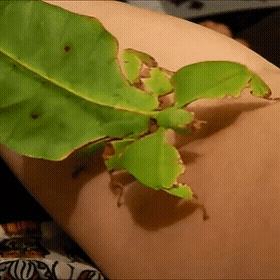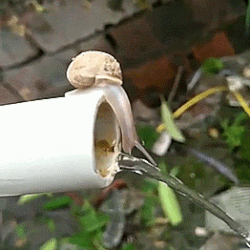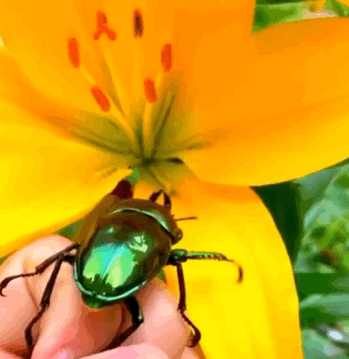Text
Hello, welcome to my Bioblog!

📝 Here's what you should know:
- I don't study biology so I may get stuff wrong. All of the info in my posts is taken from various online articles. Please do your own research!
- I'm happy to receive & show off your critter observations but I don't do any sort of species ID. If that's what you're looking for, try iNaturalist
- None of the images or footage used on my blog, including the banner and icon, are mine unless stated otherwise
- My posting frequency can be very inconsistent due to fluctuating interests & mental health reasons
- I try my best to tag common phobias but if I miss something please let me know
💡 What I post / My main bio interests (in arbitrary categories):
- Most kinds of invertebrates, including but not limited to:
‣ Insects, especially mantids and beetles
‣ Cnidarians
‣ Crustaceans
‣ Various deep-sea creatures
‣ Molluscs and worms
- Fungi & molds
- Slime molds, lichens, mosses & algae
- Most kinds of microorganisms
- Many kinds of rare plants, such as carnivorous plants and cacti
- Some species of fish, such as sharks and seahorses
- Some amphibian species, mostly frogs
-- In more general terms, I am almost exclusively interested in tropical environments, the deep sea and jungles/rainforests. I love obscure, "weird" looking critters that don't usually get a lot of appreciation. --
💬//
That's all for now but I might edit this post and add more relevant info in the future.
I was going to have a list of all my tags but figured that might be a bit overkill, please let me know what you think.
Thanks for stopping by 🔆

#welcome post#textpost#biology#bio#bioblog#bioblr#bugblr#bugs#insects#fungi#science#entomology#marine bio#mycology
5 notes
·
View notes
Text
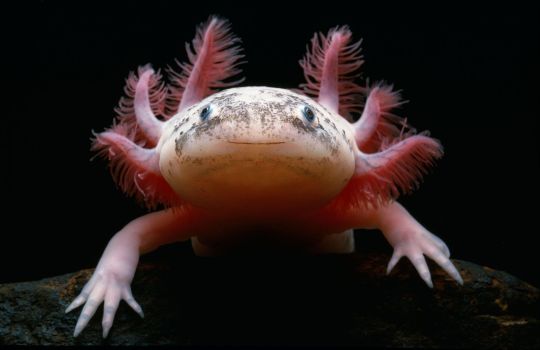


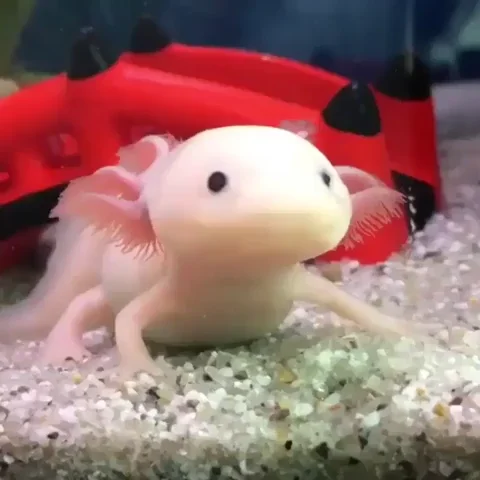

Axolotls are often referred to as “Mexican walking fish” but they are actually amphibians that prefer to live their entire lives underwater.
These remarkable creatures can regenerate almost every part of their bodies if necessary, including their spines, internal organs, and even some parts of their brains.
They have a very unique appearance and are extremely popular as exotic pets, but they can also be found in captivity at zoos, laboratories, and breeding facilities.
Axolotls exhibit a trait called neoteny, which means that they never outgrow their juvenile characteristics like other salamanders. For example, they have both gills and lungs.
According to a 2019 International Union for the Conservation of Species assessment, only about 50 to 1000 axolotls could be found in the wild.
While critically endangered, artificial selection has created many axolotl variations with different shapes, sizes, and colors not seen in nature.
[A-Z Animals: Axolotl]
#original post#fauna#axolotl#amphibians#underwater#marine creatures#marine bio#marine biology#bio#biology#bioscience#bioblr#science#scienceblr#fun facts#nature#animals#infopost
69 notes
·
View notes
Text

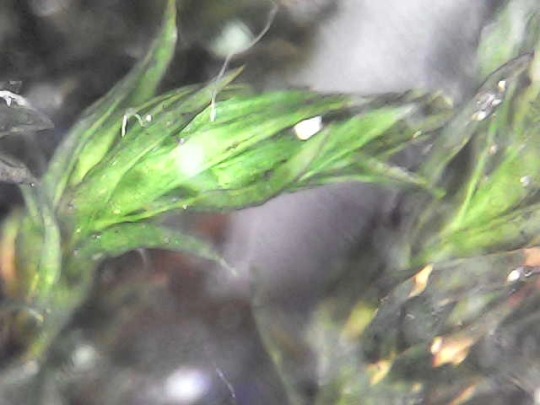




A couple days ago I decided to finally put my little mobile microscope to use and went hunting for some lichen and moss. I got three of what are probably the most common species in my country. The pictures are a little grainy but it was still fascinating to see them up close.
Lichen & moss enthusiasts, let me know if you can identify these just from the macro shots! ☀️
#PS. stay tuned for part 2 where i looked at a brown coral mushroom#original irl#flora#funga#moss#lichen#zoom#macro#macro photography#microscope#id needed#species id#nature#bio#biology#bioblr#bioscience#botany
17 notes
·
View notes
Text



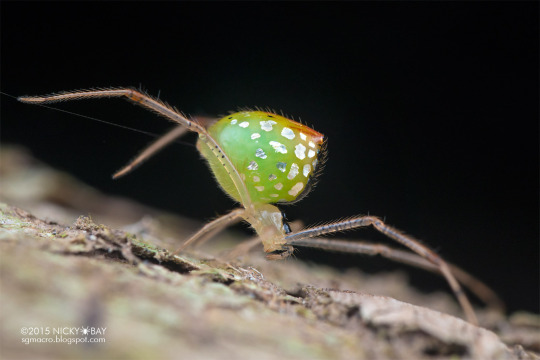
Thwaitesia argentiopunctata known as the sequined spider, mirror spider, or twin-peaked Thwaitesia, is a species of spider found in almost all states of Australia.
It is known to have a reflective abdomen that plays a crucial role in their camouflage to protect them from predators in the forest canopy.
The scales look like solid pieces of mirror glued to the spider's back, but they can actually change size depending on how threatened the spider feels. The reflective scales are composed of reflective guanine, which these and other spiders use to give themselves color.
[A-Z Animals: Sequined Spider]
#original post#fauna#Thwaitesia argentiopunctata#mirror spider#sequined spider#spider#insect#bio#biology#bioscience#bioblr#science#scienceblr#entomology#arachnids#invertebrates#bugs#bugblr#fun facts#nature#infopost
1K notes
·
View notes
Text
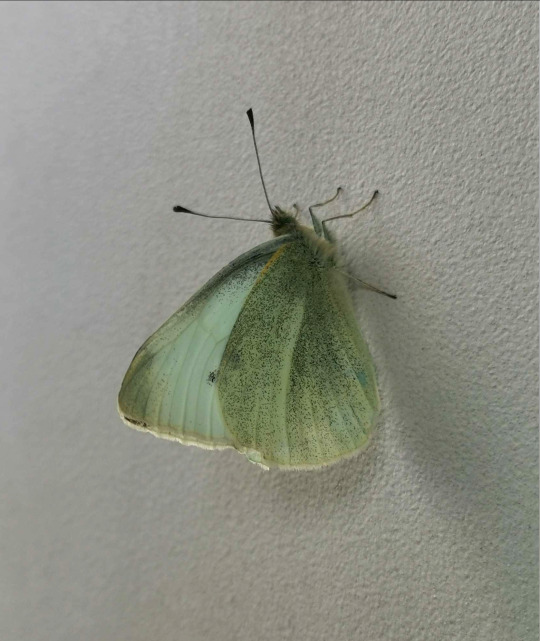


Seen this cutie a little while ago. Any bug people know what the species is called? ☀️
#could've looked into it myself but i figured it'd be way more fun to try interacting with other bioblogs#hmu! i promise im friendly#for context: pics were taken in early may and i'm from northern europe#original irl#fauna#insects#bugs#butterfly#bugblr#id needed#species id#bug id#nature#biology#bio#entomology
18 notes
·
View notes
Text





"Nautiluses are a living link to the ancient past.
They’ve been around over 480 million years, cruising deep ocean reefs even before the time of dinosaurs. These soft-bodied creatures live inside an intricately chambered shell.
A nautilus can only sense dark and light with its simple, pinhole-type eyes. But a nautilus can perceive water depth and current directions, as well as current speeds, to help it keep its body upright. A highly developed sense of smell helps a nautilus search for food and find mates."
Full article
- Monterey Bay Aquarium
#nautilus#fauna#monterey bay aquarium#original post#bio#biology#marine biology#bioscience#science#scienceblr#bioblr#molluscs#invertebrates#deep sea#deep sea creatures#fun facts#nature#infopost
2K notes
·
View notes
Text
flatid planthopper nymph, Singapore. hemipterans (true bugs) like these have mastered the art of covering oneself in weird waxy filaments, which are shed along with their last juvenile molt, revealing a sleek, gossamer-winged adult
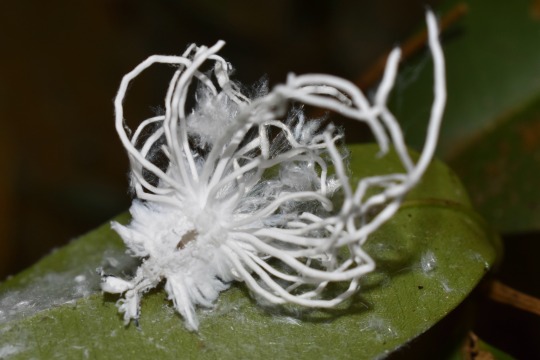

41K notes
·
View notes
Text
Happy new year everyone! (not quite, this is an old post lol)
The last few months have been pretty all over the place but I've not forgotten about this blog. I've been focusing a lot more on my art recently, (which you can find here, I decided to make a separate blog instead of mixing things together), and I haven't had as much motivation or energy to make proper infoposts, since it can be quite tedious.
I will probably start reblogging other bioscience stuff as to revive this blog and make it a sort of bio-hub because biology still has a special place in my heart.
If there are any bioscience topics you would like to see, please let me know via the ask button! I'll choose them based on my own interests & what I can find about it online but all suggestions are highly appreciated.
Thank you all for reading & sticking by :)
#textpost#announcment#happy new year#new year#2023#2022#bioscience#biology#art#artist#artblr#artists on tumblr
19 notes
·
View notes
Note
What is your favourite type of butterfly?
Thanks for the question!
I'm not super knowledgeable on the species/types of butterflies but from what I've seen, the Glasswing butterfly (Greta oto) is definitely up there in my list of favorites:

Another super cool one I found out about very recently is the Madagascan sunset moth (Chrysiridia rhipheus):

though technically not a butterfly but let's just say it counts. ☀️
#asks#answered#butterfly#moth#glasswing butterfly#greta oto#madagascan sunset moth#chrysiridia rhipheus#insects#bugs#bugblr#biology#bioscience#entomology
620 notes
·
View notes
Note
I found this at my house in s.Tennessee what is it?
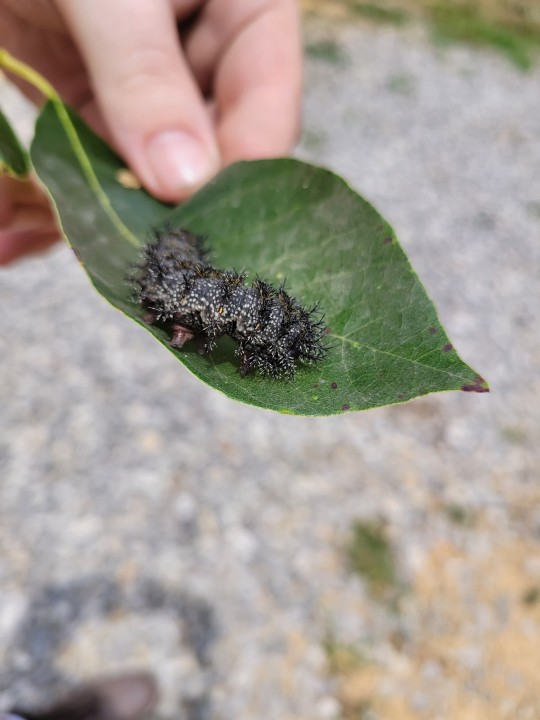
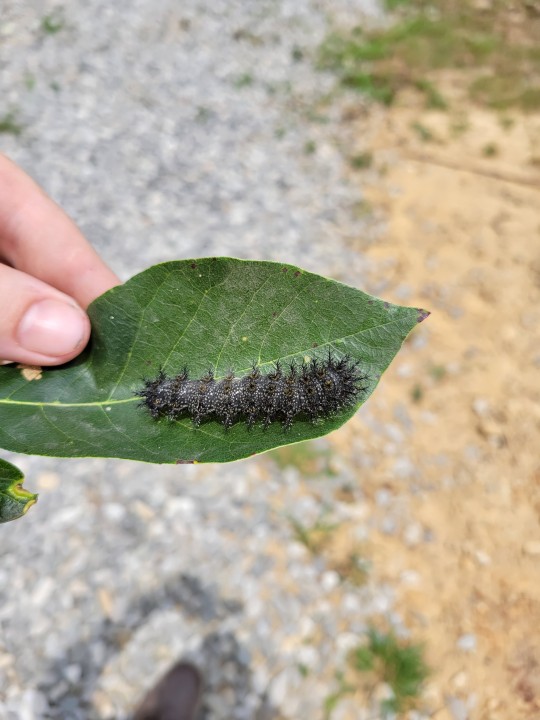

Hello!
Unfortunately, I don't do species ID and have very little entomology knowledge outside of what I post so I'm not very helpful here.
I suggest reaching out to an insect ID blog and/or submitting an observation to iNaturalist, where experienced people could help you out with identification.
Thank you for sharing nonetheless, I hope you find what you're looking for!
#ask#help is appreciated#bug id#species id#identification#caterpillar#moth#insects#bugs#bio#biology#science#entomology#bugblr#scienceblr
8 notes
·
View notes
Text





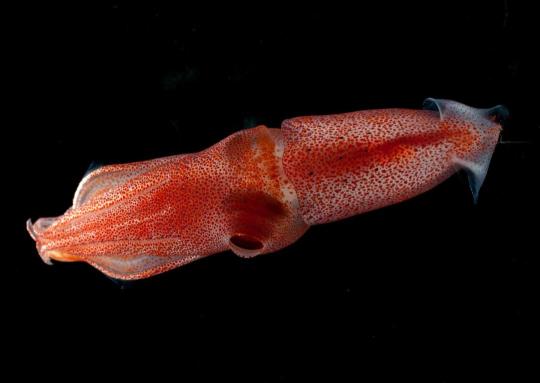
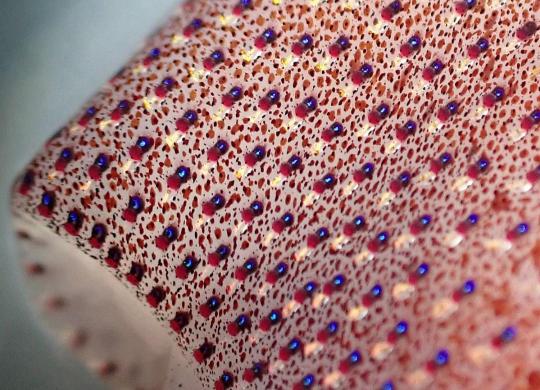
Histioteuthis heteropsis (H. heteropsis), also known as the strawberry squid or jewel squid, is a species of small cock-eyed squid found in the Pacific Ocean at depths of 200-1000 meters.
Famous for not only its berry-like bright red body speckled with numerous luminescent photophores, but also its set of differently sized eyes, this squid is a swift predator of the ocean’s twilight zone.
It is thought that the large, yellow-tinted eye, is used to see objects against the dimly lit waters above, while the smaller blue eye, measuring about half the size of the yellow one, is more geared towards capturing bioluminescent light sources below.
The strawberry squid's semi-upright posture lets it simultaneously look up, down, and sideways as it jets through the ocean.
Food in the deep-sea is scarce, so animals must evolve unique strategies to not only find food, but also to avoid becoming food themselves.
The reason for this squid's coloration has to do with the reflection of different wavelengths of light underwater. Red light is quickly filtered as depth increases and thus it effectively never reaches the deep ocean. There, a crimson coloration actually appears black and helps the squid hide from the gaze of predators like sperm whales, dolphins, tunas, swordfish, and sharks.
Small light organs called photophores also dot the squid’s body to help mask its silhouette from predators prowling the waters below.
#feel free to add or correct info#Histioteuthis heteropsis#strawberry squid#jewel squid#squid#invertebrates#cockeyed squid#bioluminescence#twilight zone#pacific ocean#ocean#bio#biology#marine biology#science#fun fact#scienceblr#bioscience#animals#nature#naturecore
456 notes
·
View notes
Text

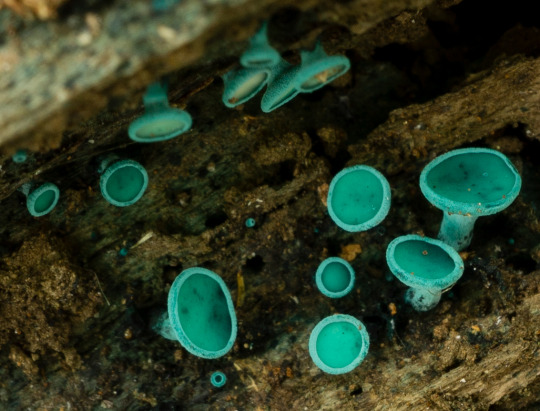
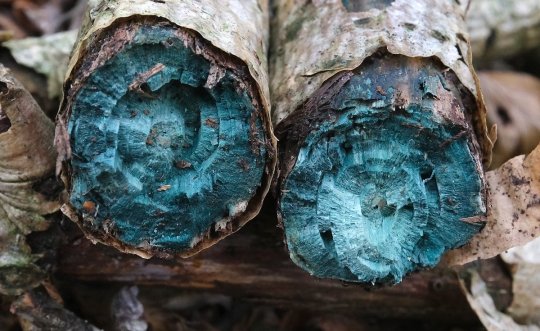

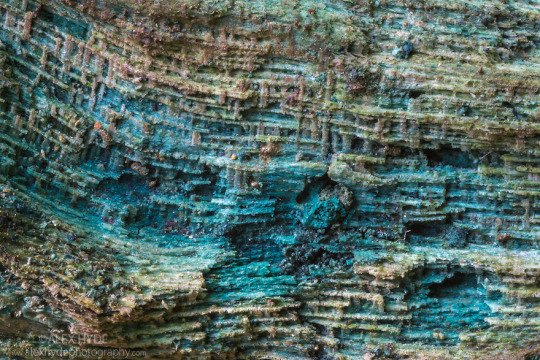

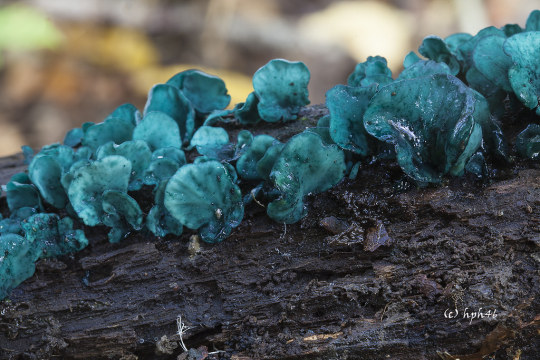
Chlorociboria aeruginascens (and the macroscopically identical species Chlorociboria aeruginosa) is a fungus commonly known as the "green elfcup", or "green wood cup", due to its characteristic small, blue-green saucer shaped fruit bodies.
They are often found on bark-free dead wood, particularly oak, beech, ash and hazel all year round.
Their fruit bodies, however, are seen much more infrequently than the turquoise staining of wood caused by said fungus, also called "spalting".
Spalted wood also comes in many other varieties. It is prized by fine woodworkers and has been used since the 14th century in wood inlays. A great example of this is Tunbridge ware wooden box covers, decorated with colorful designs made from pieces of different colored woods, many of which were spalted.
Pigmentation of the infected wood occurs when fungi produce extracellular pigments, in this case Xylindein, inside of its fibers.
However, in some spalting fungi, pigments are generally bound within the hyphae cell walls. A visible color change can be seen if enough hyphae are concentrated in an area.
#feel free to add or correct info#Chlorociboria aeruginascens#green elfcup#green wood cup#fungus#fungi#mushroom#mushrooms#mycology#spalted#wood#spalted wood#fun facts#science#scienceblr#bioscience#biology#bio#nature#naturecore
2K notes
·
View notes
Text





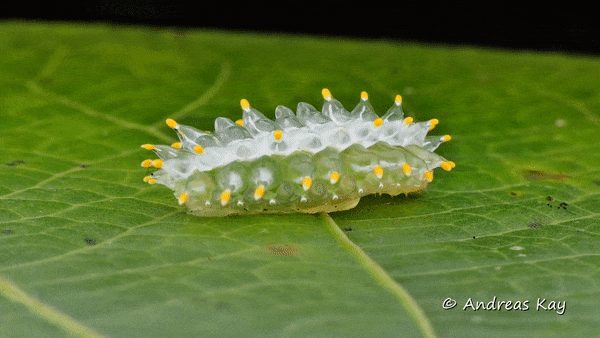
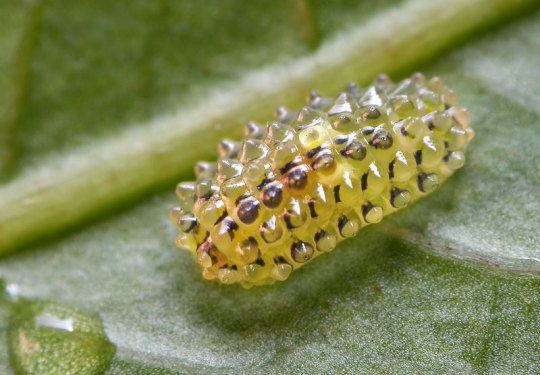
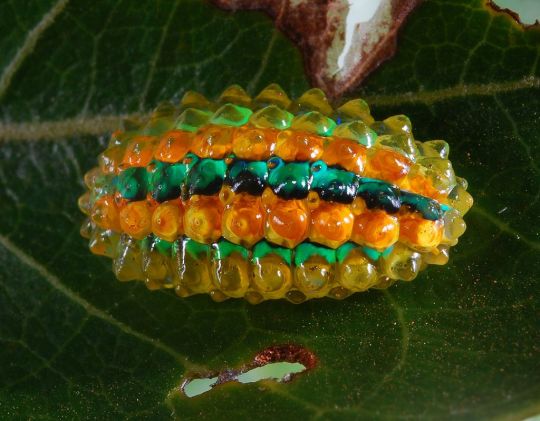

The 'Dalceridae' are a small family of moths with around 80 known species, encompassing about one dozen genera mostly found in the Neotropical region, with a few reaching the far south of the Nearctic region.
Their larvae (along with those of the sister taxa Limacodidae and Megalopygidae), measuring only about 1-2 cm in length, are often referred to as "jewel", "jelly", or "slug" caterpillars due to the translucent gelatinous coating that covers the exoskeleton of many species, as well as their stunning colors.
Though, this jewel-like appearance does not remain for long, with their adult forms taking a bright, fluffy, orange appearance. Much like a certain cheese flavored snack!
While the exact function of this gelatinous substance, along with the fragile spines underneath is not entirely clear, it is assumed to act as a means of mechanical self-defence by being nontoxic. Instead, it provides any potential predators with a "mouthful of goo" and temporarily incapacitates them.
#feel free to correct or add info#Dalceridae#jewel caterpillar#jelly caterpillar#caterpillar#moth#insects#bug#bugs#bugblr#entomology#science#nature#naturecore#animals#exotic#tropical
2K notes
·
View notes
Text

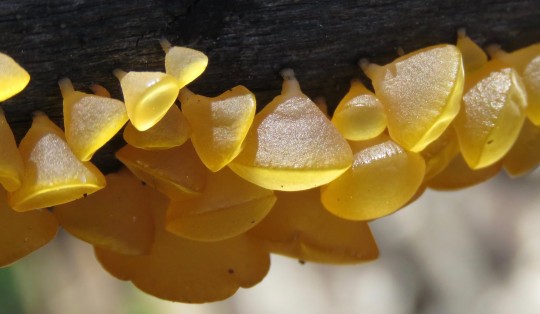
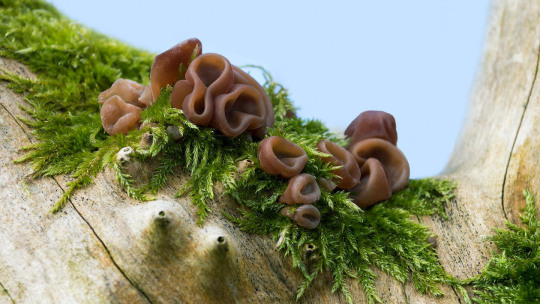
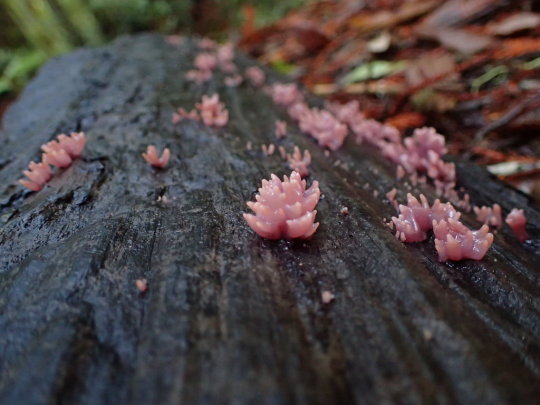

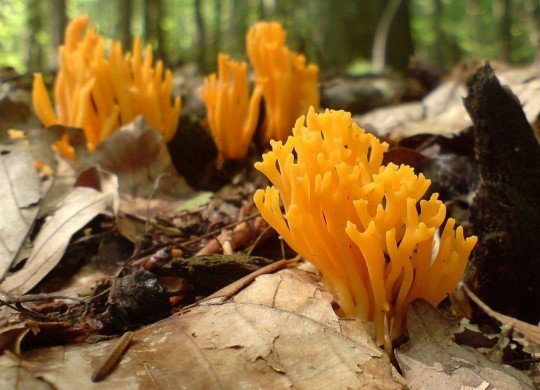
Jelly fungi are fungi characterized by having a jelly-like consistency when wet and mostly belonging to one of three orders: Auriculariales, Tremellales, or Dacrymycetales within the phylum Basidiomycota.
During dry periods their hyphae collapse down and become rather hard and resistant to bending, but as soon as they are reintroduced to moisture, they expand back out to their original gelatinous texture.
It is important to note, however, that the peculiar appearance of jelly fungi is not an absolute indicator of ancestral relationships. Gelatinous textures can also be found in some Ascomycota and are really just an adaptation to certain environmental pressures.
Due to having no stem, gills or visible pores, jelly fungi reproduce by forming microscopic basidia over their body surfaces. The basidia are similar to those on the gills or pore walls on the undersides of regular mushrooms.
Only a few jelly fungi are eaten, having little or an undesirable taste. However, some species, such as Tremella fuciformis, are not only edible but prized for use in soup and vegetable dishes. Others, like the Cat's Tongue mushroom (Pseudohydnum gelatinosum), can even be used to make candy.
#feel free to correct or add info#fun facts#science#scienceblr#mycology#bio#biology#bioblr#fungi#jelly fungi#fungus#mushroom#jelly mushroom#jelly#nature#naturecore#greenery#aesthetic
1K notes
·
View notes
Text




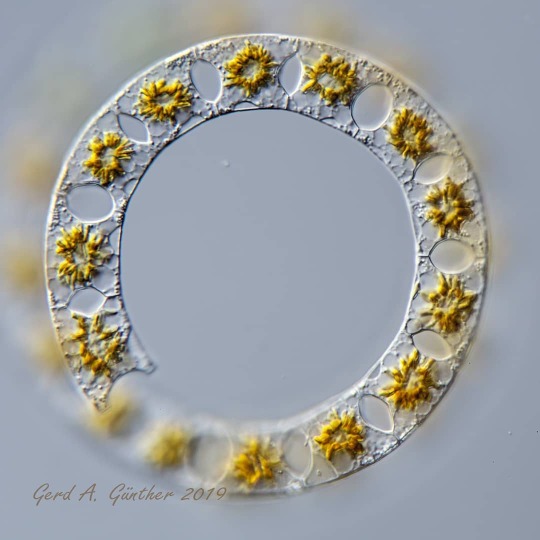


Diatoms (members of the taxonomic class Bacillariophyceae), sometimes described as "jewels of the sea", are single celled, photosynthesizing algae that are encased in intricately marked and nearly indestructible glass-like shells (frustules) composed mostly of silica, which they get by taking up and utilizing silicic acid from seawater via silicon transporter (SIT) proteins.
Diatoms occur in virtually every environment that contains water. This includes not only oceans, seas, lakes, ponds and streams, but also soil.
Although they vary greatly in size, the most commonly encountered diatoms are from 10 to 200 microns long.
These fascinating algae may be small, but their importance is not to be overlooked.
Diatoms not only provide the basis of the food chain for both marine and freshwater micro-organisms and animal larvae, but are also a major source of atmospheric oxygen responsible for 20-30% of all carbon fixation on the planet.
They can also act as environmental indicators of climate change, as well as form the basis of some household goods such as pest/mite prevention and mild abrasive.
Surprisingly enough, diatoms have also made their way into art, with their empty frustules being used in beautiful microscopic arrangements, the first of which dates back as far as the early 1800s:
#diatoms#science#bio#biology#marine biology#microbiology#ecology#microscopic#algae#water#marine#sea#aquatic#aquatic life#greenery#nature#naturecore#aesthetic#art#scienceblr#feel free to correct or add any necessary info
459 notes
·
View notes
Text

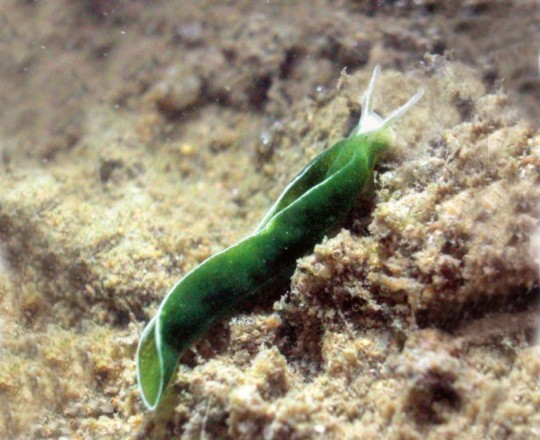

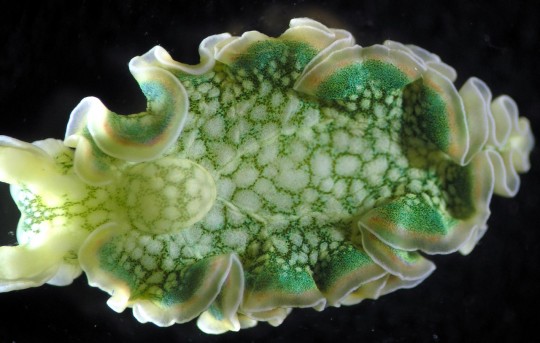

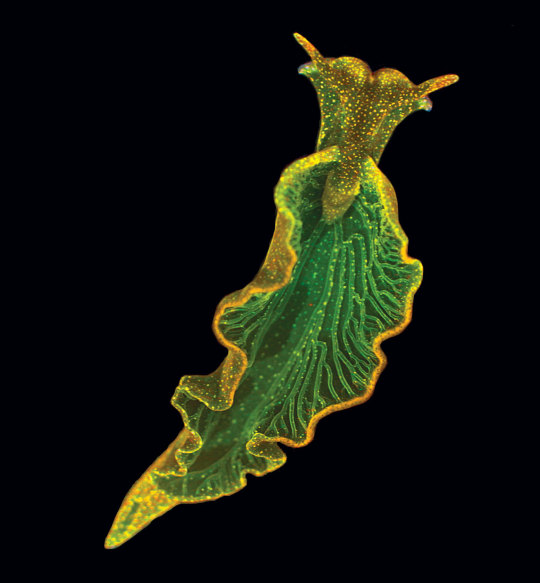
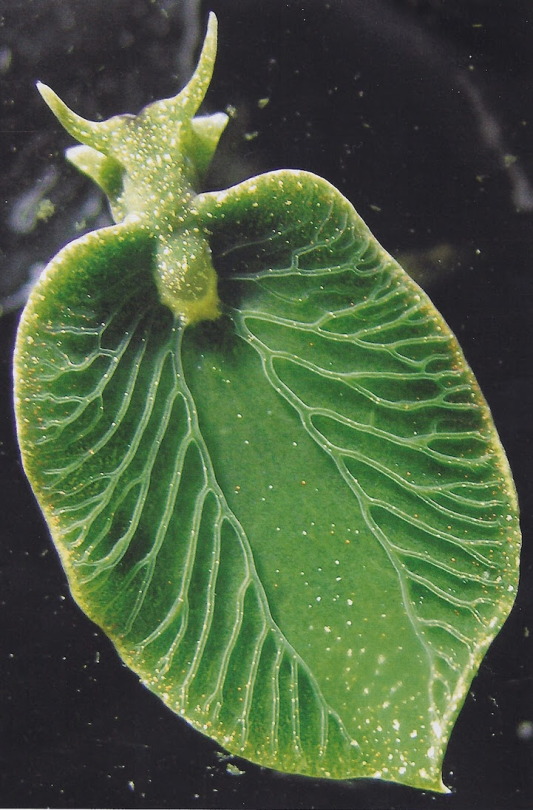

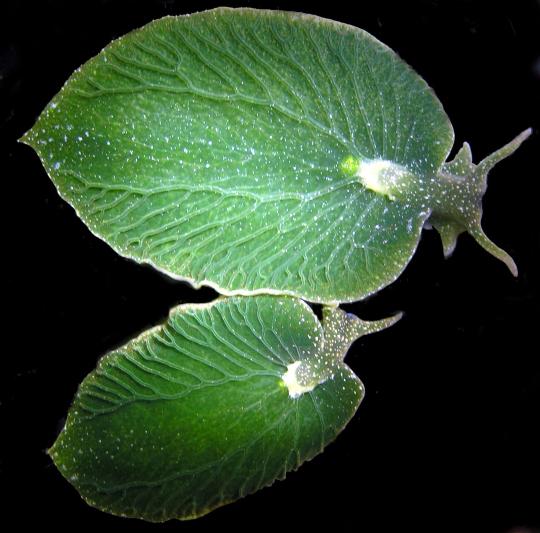
Elysia chlorotica, also called the “Eastern Emerald Elysia” is a bright green sacoglossa found along the Atlantic coast of North America that's earned the title of “solar-powered sea slug” for its ability to produce its own energy with sunlight and the chloroplasts that it sucks off of algae.
This unusual process, which is similar to photosynthesis, is known as kleptoplasty. Except for a select number of creatures like the adorable “leaf sheep” Costasiella kuroshimae nudibranch, very few non-plant organisms are capable of the phenomenon.
#nudibranch#slug#sea slug#Eastern Emerald Elysia#Elysia chlorotica#leaf sheep#Costasiella kuroshimae#algae#photosynthesis#greenery#plants#invertebrates#gastropods#molluscs#bio#biology#bioblr#marine biology#science#scienceblr
10K notes
·
View notes
